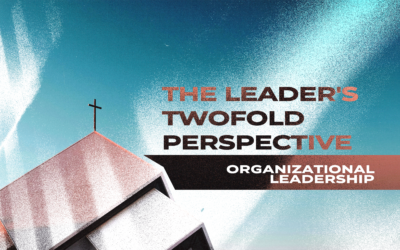Five Perspectives of Living in Limbo that Will Lessen Your Angst During the In-Between Times
In-Between what?
- Between here and there.
- Now and then.
- What is and what will be.
- Today and tomorrow.
- Your morning coffee and your ultimate contribution.
Those “In-Between Times” identify themselves as a period of time of internal dryness and desperation where God seems distant. Although there may be minor variations in the concepts, here we are using the phrases “in-between times,” “desert times,” “times of silence” and “times when you don’t know what to do” interchangeably.
Though difficult, you have not taken a detour. That’s what Perspective #1 told us: View It as a Solid Step in Your Future Direction.
The In-Between Times also retool us. They adjust our perceptions and where we think life is headed. Perspective #2 showed us: Be Willing to Adjust Your Life’s Purpose and Direction
Today’s perspective deals with timing.
For those knowledgeable about sports, the concept is familiar.
- When you watch or lift in a weight lifting competition, the lifter must lift the weight high enough for the lift to count. He or she must extend the arms (or legs or back, as the case may be) so that they “lock out”. If the lifter stops short of the “lock out”, before the referee says you “locked it out”, the lift doesn’t count. And, if the lift doesn’t count, you must either count your former lift (at a lower weight and a lower score) or you must lift it again.

- In track, when finishing a race, you don’t reduce your speed before the finish. Great runners run all the way through the tape to get the best race time. Don’t lessen your speed as you get to the end of the race. If you slow down just before the finish line, your time suffers.
- Likewise, those who participate in Tae Kwon-do are taught to punch beyond the board. You power through the board, not just to the board. Hesitating just as your fist reaches the board lessens your power, along with the likelihood that the board will break.
This principle of “going through the end” consistently shows up in a variety of sports, physically. And, this principle also holds true when you find yourself “in-between”. So, what is true physically in weight lifting or running or punching also stands true emotionally when you are in the desert. Don’t stop short of the end. So, here’s the third lesson.
Perspective #3: Don’t Exit the Transition too Soon
Although excruciating, the time in the desert develops you in ways the oasis cannot. The desert’s deepening remains unavailable when things go smoothly, growth continues, and the organization moves up and to the right. That internal twisting of the in-between time shapes you into who you need to be for the next chapter and all the chapters that follow. So, take full advantage of it. Taking full advantage of the in-between time offers necessary capacity for the road ahead. By all means, don’t short circuit the process before it completes what needs to happen in you.
It does sound kind of crazy. Why in the world would you continue to endure the emptiness if you have a way out? You stay because the staying benefits your leadership, your impact and your influence throughout the rest of your days. Leave too soon and you limit your learning, as well as your future impact. Here are some reasons why.
Staying long enough offers the following benefits:
For one thing, staying long enough helps you avoid “out of the frying pan into the fire” syndrome.
“Fan Into Flame” titled a Promise Keepers’ conference years ago. At the time I was thinking it would be better to teach leaders how to: “Keep Your Fanny Out of the Flame.” But, things could be worse. Today you face desperation and disorientation. And, those things present their own difficulties. But, if you start again in a similar situation with the same types of dynamics, that is definitely worse. If you go to another place that looks a lot like the one you are leaving, you most likely will be facing the same angst, but it will take you longer to grow your way out. Better to learn it now.
Probably my most impactful early transition, my personal “dark night of the soul” did offer an escape part of the way through it. I was desperate and anxious and wanting to leave. As a matter of fact, eight pages of my journal at that time were dedicated to only five words: “Get Me Out of Here!” And, every time I wrote it, the words got bigger: “GET ME OUT OF HERE!!!!” I prayed and pleaded with God.
All I thought I wanted was OUT.
Rich Halcombe
Somewhere, anywhere had to be better than that place. So, an opportunity arose. Different church, different state and different people. As I walked through their process, I started noticing that that place looked a whole lot like the place where I was. Different place, different names, but eerily similar mindsets and processes and questions bubbled out. The new place certainly was a different place. But, the new place didn’t offer any new path. Although it certainly differed in some respects, the similarities could not be overlooked. So, even though I agonized where I was, I stayed where I was. In retrospect, I am very glad I did.
If I had moved to another place, it would have taken another couple years to get out of thatplace. In the ministry world, churches usually don’t talk to you if you have been the lead guy for less than two years. It can happen, but it usually doesn’t. If I would have moved, I could have stretched out the desert time for another go. And, I really didn’t want to do that. So, sometimes you stay to avoid retracing the same steps in a different place.
This first reason to stay long enough deals with the place. The next two advantages to staying long enough deal with the person. You, as the leader, benefit. You benefit now and for all the things you will lead in this life. This next advantage shows you one way you benefit.
Second, staying in the desert long enough helps you understand what people think based upon patterns of behavior.

Patterns include actions, symbols, written documents and spoken (especially repeated) words.
And, you learn pattern recognition in the desert. In your current circumstance, there are things you missed when you were hired. Certain questions, the way things were handled, understanding of the neighborhood, aspects of the building that were chosen years prior, the way decisions were made, who contacted you, the search committee taking you to a different city just to get ice cream (true), as well as their overall view of God and the world. By the way, we went to a different city for ice cream because there wasn’t an ice cream place in their part of town and because it was too dangerous to drive through that part of town in the evening.
Pattern recognition means you see how things are connected. Here are a few patterns:
- The size of the building and the size of the lot directly reflects the size of the church’s vision.
- The safeguards built into their constitution speak volumes about how they regard the pastor.
- Most of the people in the church didn’t live in the neighborhood because it was too dangerous. This disconnect with the community unveiled a disconnect between the church and the people we needed to reach.
- Churches that have not changed anything significant ina long time were not likely to change anything fora long time.
- The structure of their programs mimics the structure of their thinking.
- The church’s change quotient corporately (how much change they can manage without going on tilt) reflects the accumulation of the members’ change quotient in their personal lives.
- When a church uses long (timewise) processes for making decisions, most of the church’s energy goes into the decision making, leaving less time and energy for actual impact.
Increasing your discernment in the desert better equips you for all that is to follow.
Make no mistake. The issue here is not that any of these things could not be overcome. The issue is that I didn’t see ANY of them on the front end. Each of these issues created their own turmoil and challenge. Each of these things could be overcome. But, the difference in the desert for me was that I now understood them and learned how to recognize them.
Because, if you can’t see it, you can’t lead it.
And, that pattern recognition guides and better equips me in virtually every situation I now face. It also assists my current role in mentoring and coaching other leaders. I would have lost all those benefits had I moved too soon. Leaving too soon makes it harder to see how the dots connect. So, staying long enough certainly teaches you to see your current reality. But, staying long enough also better prepares you for what is to come, if you act on it.
Third, staying long enough provides time for you to learn what you need to know for the next chapter of life.
Leaving too soon is similar to a baby being born too early. The baby certainly can survive it, and many of them do. But, when the baby is born prematurely those early months are going to be more difficult than they would be if the baby is born at full term. That word “premature”, meaning “before mature” also applies to the desert. Don’t vacate your current role until maturity develops. Don’t escape “prematurely”. Hang in there until you mature. Resist leaving your present position until you have milked all the learning from it. And, part of your personal education involves actively seeking insight and wisdom for what is to come.
You have an inkling as to where you are headed. You don’t know the exact place or names of the people, but you know what you sense God wants you to do. So, now, while in the desert, bone up on those skills and knowledge you will need. While in my first church, I studied and preached about how God uses leaders, spiritual gifts, listening skills and organization. Although unable to use that information there, God has used it at every stop since. As he will for you, my friend.
What have you learned in the desert? Please comment below and tell us a lesson you acquired during one of those dry times.
(Continue reading with Part 3. Missed Part 1? Catch up here.)
Who We Are
LeaderINCREASE helps leaders get clear on where to go and understand how to get there, with less hassle. We understand that choosing to make a difference as a leader isn’t always the easiest.
We focus on providing leaders with resources they need to make a difference and become actionable leaders for their organization. We look forward to helping you achieve your goals as we have done for many others.




